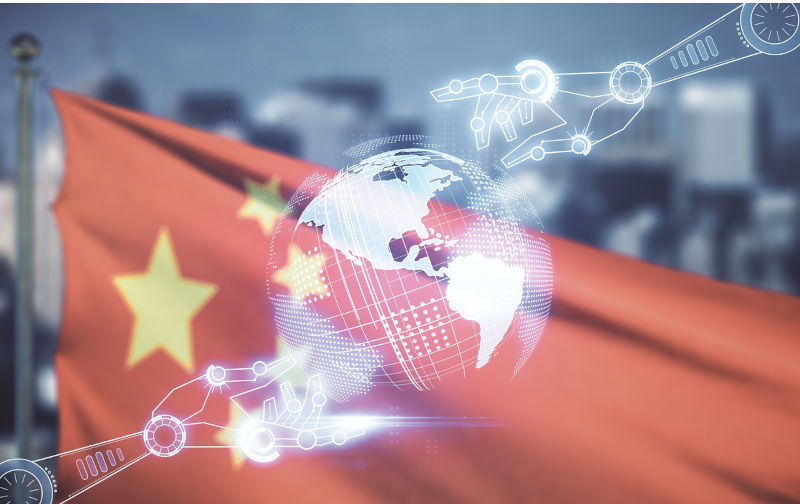Steady as she goes
August 5, 2024
China’s Third Plenum consolidated the significant changes in policy direction foreshadowed in previous quietly implemented policy designed to progress towards the goal of common prosperity.
Many foreign observers thought China’s third Plenum offered little in the way of changed economic policies.
They were wrong.
The Third Plenum was a disappointment to many foreign observers because it did not deliver the substantial changes in economic policy that they wished for. Instead the Third Plenum consolidated the significant changes in policy direction foreshadowed in previous quietly implemented policy designed to progress towards the goal of common prosperity.
The Plenum confirmed the direction and continuation of the most significant changes in the Chinese economy since 2008. It endorsed the shift to a digital economy. It continued to build defences against the subversive intent of chip sanctions and trade tariffs. Despite these adversarial moves, the Plenum reaffirmed unwavering support for the WTO free trade environment.
The Plenum was ‘steady as she goes,” providing support for the ongoing efforts and achievements in reform and opening-up necessary for common prosperity. The decisions reflect the need to protect the fruits of those reforms and to ensure that the progress made is not stunted or restrained in the future by attempts to hamper China’s growth.
Achieving a high-level socialist market economy and socialist modernisation ensures that nobody is left behind by economic development. The first objective, lifting people out of absolute poverty has been achieved. The new objective is common and moderate prosperity and the Plenum policy announcements should be viewed within this broad policy context.
These policy objectives have practical meaning whereas in Western electoral campaigns similar policy objectives are often carelessly promoted and then just as carelessly discarded. It is this binding policy commitment and implementation that makes Plenum decisions so significant.
The demand and development of new and high quality productive forces is one of the key phrases to emerge from the Plenum. It positions the Chinese economy to become a leading light in the innovation of new technologies as it builds an advanced digital economy.
The productive forces include further support and development of clean technologies and is a key reference in the context of future economic growth. The government aims to expand new foreign trade relations in this area, partly in response to recent US and EU tariffs on green technology.
The Plenum recognised that China must “adapt to the new round of scientific and technological revolution and industrial transformation.” The ultimate goal is to make China a champion of innovation through generating disruptive technology and scaling up into high-end manufacturing. This is consistent with the gradual change in economic focus where economic growth and continued prosperity comes from the digital economy.
It also reflects a determination to achieve technological self-reliance in order to help China withstand the US policy strategic technological containment. It is a prudent policy given the potential for a new Trump administration and its stated intention to further hamper China’s growth.
The desire to ‘further deepen reform comprehensively’ consolidates the benefits of economic reform so that a high-standard socialist market economy can continue to provide the foundation for Chinese modernisation. The key features include leveraging the role of the market to foster a fairer market environment to make resource allocation as efficient and productive as possible.
Although these objectives mimic the opening up desired by Western business they have a slightly different emphasis in the Chinese context. A fairer market environment does not open the door to unfettered rapaciousness. A fair market environment delivers economic benefits more equitably. So too with resource allocation.
The emphasis is on social responsibility and obligations to improving society. In Western markets these are part of ESG requirements. From the Chinese perspective, it is a focus on the social responsibility of business to add to common prosperity rather than provide advantages to elite groups.
This suggests a continuation of moves to curb the power and influence of large business groups. China does not want to see the likes of Zuckerberg and Musk emerging where profit and influence outweigh an obligation to social responsibility. The regulatory changes in relation to expensive after-school tutoring services were designed to ensure equality of access to education so that success was not dependent upon wealth.
Common moderate prosperity is not an empty phrase. As much as Western commentators would like to see China cast in the same mould as the capitalists system, the Third Plenum remains committed to endorsing the social responsibility of business to enhance common prosperity in all fields, including the living environment.
‘Ecological civilisation’ is now cast as a key feature of China’s modernisation with aims to promote the reduction of carbon and pollution. China is installing renewables so rapidly that it will meet its 2030 target by the end of this month — or 6.5 years early.
China is installing around 10 gigawatts of wind and solar generation capacity every fortnight. The climate agenda supporting green growth and tackling climate change offers new collaborative opportunities for foreign investment.
Opening up is a defining feature of Chinese modernisation and it brings benefits for foreign companies and the global economy. Essential to success is strong support for free trade in the face of pressure for protectionist tariffs.
It is often assumed that opening up is an exclusive invitation to Western investment in China. The Global Development Initiative and Global Civilisation Initiative all suggest that the opening up invitation is increasingly extended to the Global South. The mature markets of the EU and the US remain important, but the Global South is the locus of future global economic growth.
The Third Plenum did not signal a change in economic priorities. The Plenum confirmed that China is committed to changing its growth paradigm, from chasing a nominal growth rate to building a resilient economy driven by digital and technological innovation that thrives despite protracted geopolitical repercussions.
A version of this article was published in China Daily, July 25, 2024
